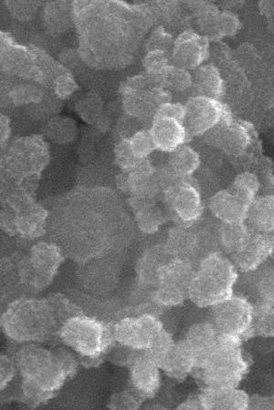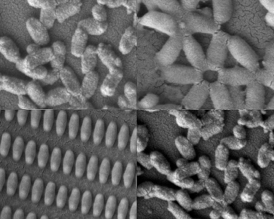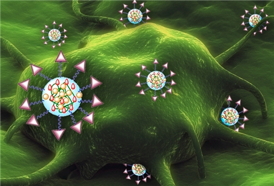Science
Disks Don't Need Planets to Make Patterns

Debris disks around stars naturally form complex structures without the presence of a planet. This image shows the dust density and the growth of structure in a simulated disk, which extends about 100 times farther from its star than Earth's orbit around the sun. At left, the disk is seen from 24-degree angle; at right, it's face-on. Lighter colors show greater dust concentrations.
- Read more
- 300 reads
NGC 2392: A Beautiful End to a Star's Life

NGC 2392 is a planetary nebula, a phase that results when a star like the sun becomes a red giant and sheds its outer layers.
- Read more
- 325 reads
ESO’s Very Large Telescope probes growth of galaxies

Astronomers using ESO’s Very Large Telescope have spotted a distant galaxy hungrily snacking on nearby gas. Gas is seen to fall inwards towards the galaxy, creating a flow that both fuels star formation and drives the galaxy’s rotation. This is the best direct observational evidence so far supporting the theory that galaxies pull in and devour nearby material in order to grow and form stars.
- Read more
- 338 reads
Antifreeze, cheap materials may lead to low-cost solar energy

- Read more
- 350 reads
Nanoparticles, made to order — inside and out: New research enables high-speed customization of novel nanoparticles for drug delivery and other uses

Researchers at MIT and the University of North Carolina created these coated nanoparticles in many shapes and sizes.
- Read more
- 526 reads
Stuttgart researchers coordinate major EU project to clean up soil and ground water: Pollution control with nanoparticles

Carbo-Iron: combination of nano-iron and active carbon particles – a development by the project partner UFZ – are being tested at VEGAS on a large scale.
- Read more
- 333 reads
Researchers build an all-optical transistor: An optical switch that can be turned on by a single photon could point toward new designs for both classical and quantum computers

- Read more
- 343 reads
The Butterfly Nebula
The bright clusters and nebulae of planet Earth’s night sky are often named for flowers or insects. Though its wingspan covers over 3 light-years, NGC 6302 is no exception. With an estimated surface temperature of about 250,000 degrees C, the dying central star of this particular planetary nebula has become exceptionally hot, shining brightly in ultraviolet light but hidden from direct view by a dense torus of dust.
- Read more
- 354 reads
Nanoparticles Utilized to Improve Cancer Treatment

- Read more
- 406 reads
NASA Decommissions Its Galaxy Hunter Spacecraft

This image from NASA's Galaxy Evolution Explorer (GALEX) shows Messier 94, also known as NGC 4736, in ultraviolet light. It is located 17 million light-years away in the constellation Canes Venatici.
- Read more
- 418 reads
Human Rights
Fostering a More Humane World: The 28th Eurasian Economic Summi

Conscience, Hope, and Action: Keys to Global Peace and Sustainability

Ringing FOWPAL’s Peace Bell for the World:Nobel Peace Prize Laureates’ Visions and Actions

Protecting the World’s Cultural Diversity for a Sustainable Future

Puppet Show I International Friendship Day 2020

